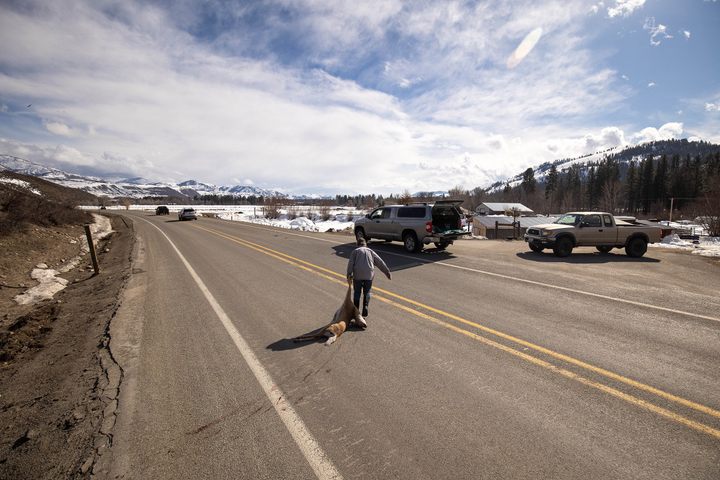

The Changing Landscape of Eating Roadkill
One way to make sense of the senseless slaughter of roadkill? Salvage it for food.
This article was originally published in bioGraphic, an independent magazine about nature and conservation powered by the California Academy of Sciences.
Every collision between a vehicle and a deer is, in a sense, a failure of vision. Deer crashes are rampant at dusk, those liminal hours when the wild world moves and human drivers, racing home from work, are blindest, the photoreceptive cells in our retinas confounded by twilight. For their part, deer’s wide-set eyes bestow a 300-degree field of vision to detect stalking predators, but their poor depth perception prevents them from accurately judging the speed of an oncoming F-150. We are, both species, poorly evolved for modernity: us for driving cars, deer for avoiding them.
If sensory inadequacy is the immediate culprit, however, the root cause of deer collisions is geographical. Our highways tend to follow river corridors, where gentle terrain makes for easy travel—and whose plentiful water, browse, and shelter attract prodigious herds of deer. Such is the situation in northern Washington’s Methow Valley—one of the likeliest places in the Pacific Northwest to hit a deer. The valley forms a winding defile through the Cascade Range, along which the Methow River and Highway 20 twine like mating snakes. It is also home to somewhere between 8,000 and 12,000 mule deer (Odocoileus hemionus) and about 2,000 white-tailed deer (O. virginianus), the muleys’ sister species. Their seasonal and daily movements—between river and hayfields, apple orchards and bitterbrush stands, bedding areas and grassy hillsides—lead them frequently over the road. Between 2009 and 2015 alone, state transportation workers removed 242 deer carcasses from Highway 20. That’s surely a meager fraction of the true toll, since for every deer found by the shoulder, several more mortally wounded ones stumble into the woods or fields to die.
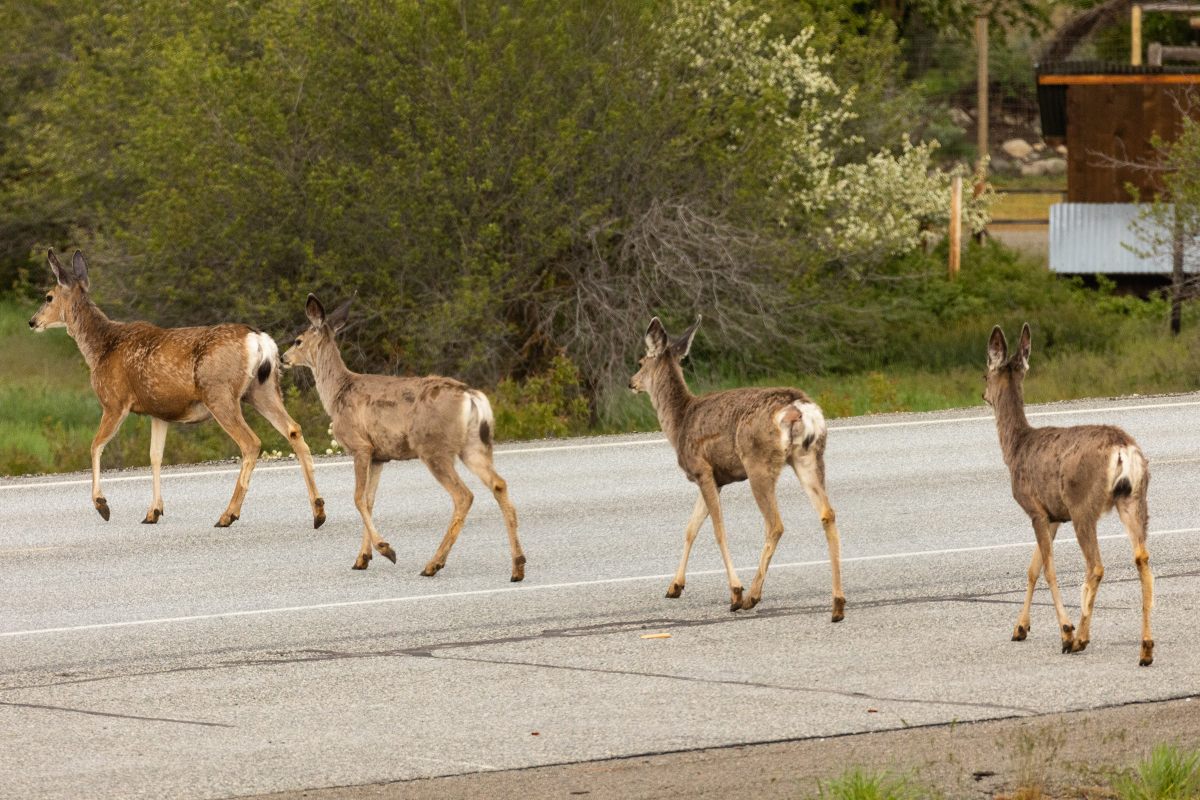
One March day I drove to the Methow, arriving near sundown. Bands of muleys paced the roadside hills, ghosts against a quilt of white snow and dun grass, the privation of late winter outlining their ribs. Brake lights flared in front of me as two lanky does clacked over the pavement. Ravens and bald eagles perched in the pines, awaiting the inevitable feast.
I’d come to the Methow to follow a different scavenger. In 2016, Washington legalized the harvest of road-killed deer and elk carcasses, and what had once been the covert hobby of a few local scofflaws became widespread practice. “Before salvage was legal, you would see dead deer daily on the highway,” said Jason Day, an enforcement officer for the Washington Department of Fish & Wildlife. “And now I can think of only two in the past couple of weeks. They get scooped up pretty quick.”
In this regard, the Methow is paradigmatic. Across North America, roadkill rates are on the rise, as ever more mobile human society intersects with resurgent populations of wild mammals. Once, eating this bountiful “street meat” was forbidden both by law and custom. Today, however, around 30 states allow it, and many rural Americans have come to rely on it for sustenance. If roadkill represents a wanton loss of life, salvage may be a form of redemption—the senselessness of vehicular death converted by oven or skillet into a sort of gustatory accountability, a bodily connection to place and the ways we inhabit it. Not that the stigma has been completely erased. “Once, midway through the meal, I mentioned the venison came off the highway,” one Methow salvager told me. “Dad was a little disturbed.”
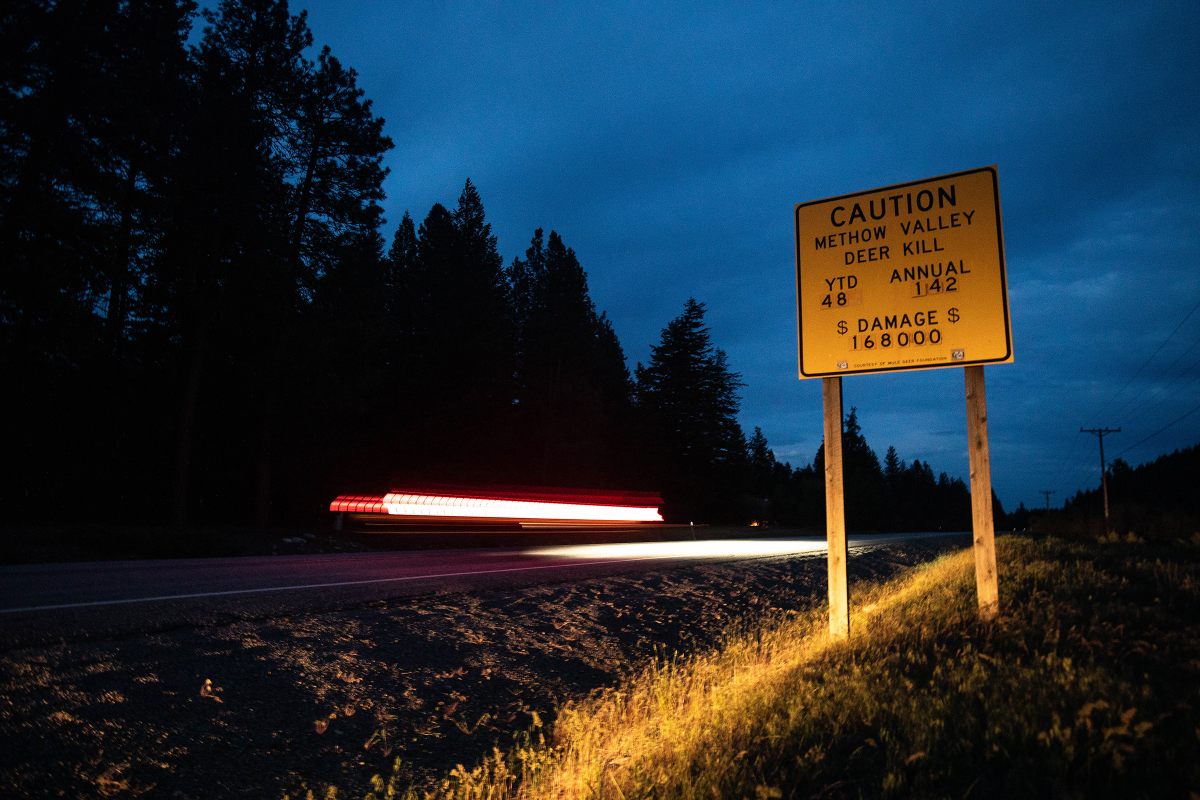
In the time that it takes you to read this paragraph, a driver in the United States will hit a deer. Every year, cars strike between one and two million large mammals, most of them deer. Some 200 people perish in these crashes, a familiar danger in the Methow: In September 2020, a motorcyclist died when the Harley-Davidson she was riding on whacked a deer on Highway 20, careened off the road, and crashed through a barbed-wire fence.
Though commonplace, collisions between vehicles and deer are relatively recent phenomena. Until the mid-1900s, roadkill surveys in the U.S. were virtually devoid of deer, mostly because whitetails and muleys were still recovering from centuries of persecution for their meat and hides. The Methow was no different. “When you go back and look at some of the historical accounts from early European settlements here, there was a period where there were virtually no deer in the valley,” said Scott Fitkin, district biologist for the Washington Department of Fish and Wildlife. “And the ones that were found got shot and eaten.”
Over time, however, hunting restrictions and forest management changes helped deer rebound. By the early 1980s, some 30,000 roamed the Methow. The growing population consisted of two overlapping herds with very different life histories. The valley’s white-tailed deer, and some muleys, spent the entire year in low-elevation fields, scrub, and forests. The bulk of the mule-deer herd, meanwhile—some 70 to 75 percent—trekked into the mountains to nibble young buds and lush grasses each spring and summer, then marched back into the Methow and its tributary valleys a few months later to ride out winter. Migratory deer learn their routes from their mothers and teach them to their fawns, and are extraordinarily loyal to their ancestral pathways and ranges. A few years ago, Fitkin recalled, one radio-collared doe barely budged from her summer pasture even as wildfires burned around her.
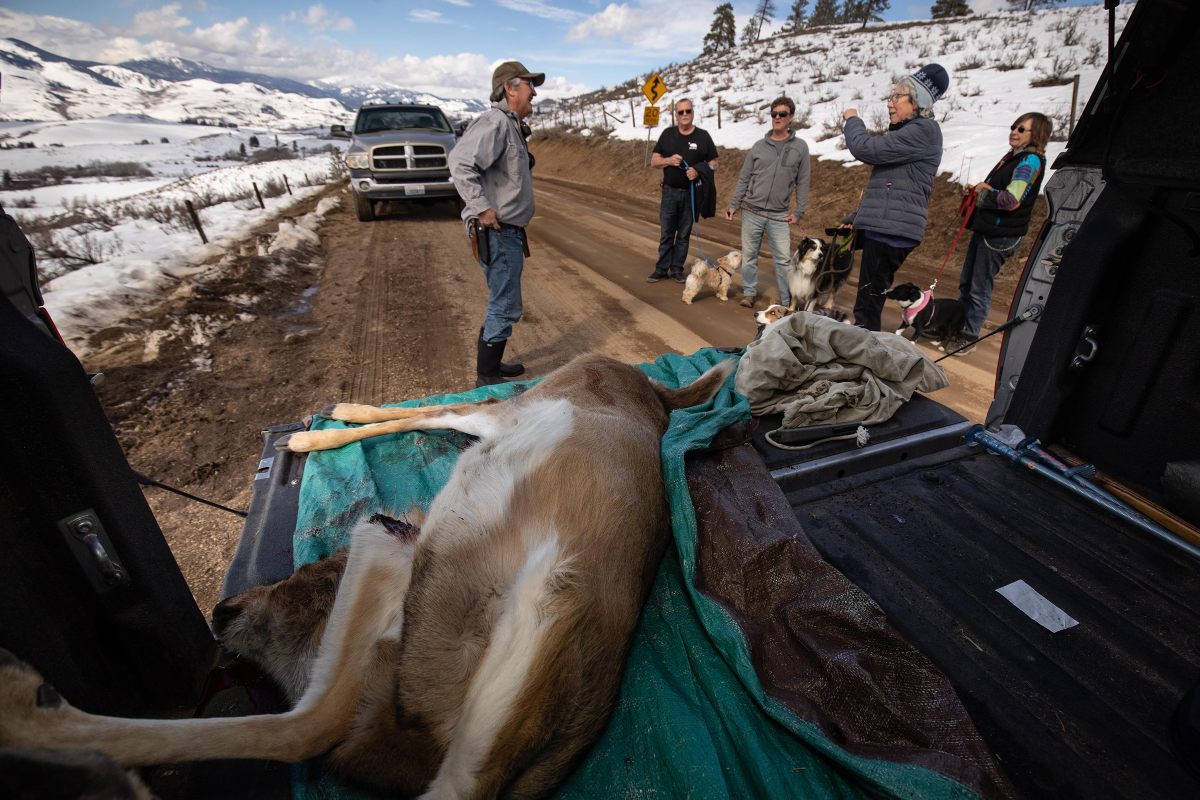
Gradually, however, a curious thing began to happen to the Methow’s mule deer: Many ceased their annual migration. When scientists collared 22 female deer (20 muleys and two whitetails) in 2018, they found that around two-thirds of the animals stayed in the valley year-round. Fitkin suspects people are the reason. The Methow has become a land of anthropogenic plenty, with all the ornamental shrubs, fruit trees, hayfields, and irrigation canals that an ungulate could desire.
It is a world that both enriches and endangers ungulates: More resident muleys means more deer crossing Highway 20, the paved stake that pierces the Methow’s heart. Whether collisions actually threaten the herds’ future, though, is unclear. Fitkin has found that other causes of death, like predation, claim more ungulates, and that roadkill alone likely isn’t severe enough to depress the population. Yet he pointed out that vehicles dole out death differently than, say, mountain lions. While carnivores favor the sick and the old, cars are equal-opportunity killers. In Canada, researchers found that vehicle-struck elk were in better shape than those slain by wolves and cougars; in Poland, roadkilled songbirds were likewise healthier than ones picked off by sparrowhawks. The implications of this difference are troubling in the Methow: Whereas predation often eliminates animals who would have died anyway, cars and trucks may kill those most vital to a herd’s long-term persistence. And in the Methow, deer are already troubled by drought and wildfire. “If the annual growth rate of your population is hanging right around the break-even point, significant roadkill could be enough to put it into the negative column,” Fitkin said.
Whatever cars are doing to the Methow’s deer population, they’re hell on individual deer. And where biologists focus on big-picture population numbers, laypeople zero in on the welfare of specific animals. Everyone in the Methow seems to have a story about observing a suffering deer. Betsy Devin-Smith, a sheep rancher who lives near a roadkill hotspot that she calls “slaughter alley,” told me she often finds drivers parked near her property in a state of shock, hoods staved in, a bloodied, broken-limbed deer writhing on the shoulder. Sometimes they knock on Devin-Smith’s door and ask to use the phone. Sometimes they ask to use a gun. Devin-Smith tends to perform the mercy-killing herself, or sends her husband, Skip, to do the deed.
“I don’t want to say that it kills me,” Devin-Smith said—the deer’s literal death obviously outweighs any metaphorical one. “Let’s just say it really, really saddens me.”
If there’s a saving grace to the chronic carnage, Devin-Smith added, it’s that she has a friend who will gladly pick up the victims. “When his freezer is empty, he’ll come get it,” she said. In the Methow, dead deer rarely go unclaimed for long.
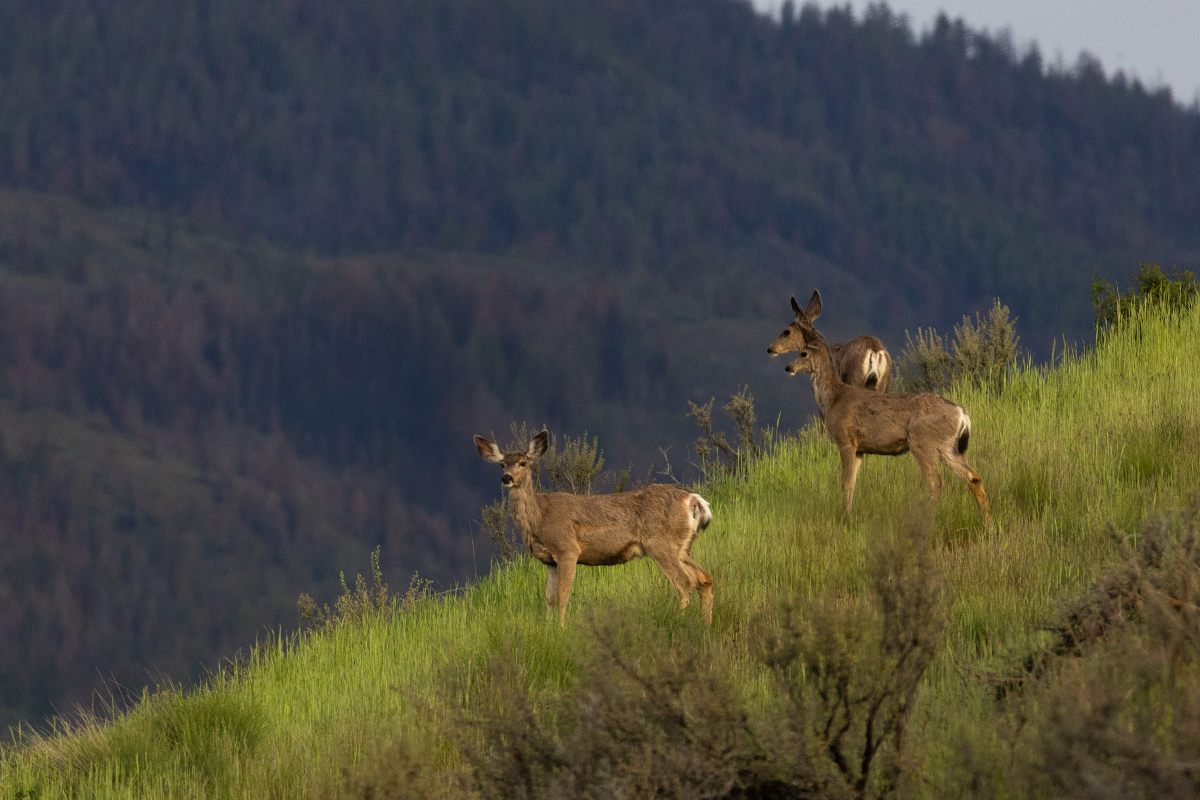
The morning after I arrived in the Methow, I set out at first light with local photographer Ryan Bell in hopes of salvaging a carcass ourselves. It was prime roadkill season: Migratory deer hadn’t yet abandoned the valley for their summer range, and sub-freezing overnight temperatures would help preserve the meat of any unlucky enough to fall to a car. We drove east on Highway 20, past skeletal cottonwood galleries and brittle hayfields. The hills were cross-hatched with trails beaten by thousands of hooves, many of which led straight to the road’s edge. The labyrinthine paths seemed especially dense on south-facing slopes, where the sun had exposed early-spring forage.
Bell and I found no shortage of meat, most of it fit only for non-human scavengers. The towering snowbanks along Highway 20 had just begun to melt, disgorging the deer they’d entombed over the winter, like receding glaciers coughing up wooly mammoths. Ravens swarmed the putrid offerings, ripping at glassy eyes and nasal cavities. We drove on, stopping at each deer we passed: two, four, a half-dozen. One doe, killed within the last day or two, was borderline, her flesh cold and firm to the touch, like packed river clay. Bell, a former hunting guide, advised against it.
As we debated whether to claim the doe, a highway maintenance worker rolled up in a front-end loader, one deer already slumped in its bucket. We let him scoop up the carcass and asked him where he’d dump it. “Wherever I feel like,” he said. (Later, Bell showed me one popular dumpsite, a steep embankment strewn with spines and skulls, a twenty-first century buffalo jump.) One recent Sunday morning, the worker added, he’d helped a mother and two kids load twin fawns into their minivan on their way to church. With the decompositional clock ticking, the family bailed on services and went home to butcher.
The pervasiveness of roadkill harvest in the Methow hints at a broader cultural transformation. Once, salvage was considered déclassé, if not outright dangerous. Snarked the humorist Dave Barry in 1998, commenting on the consumption of squirrels in the Miami Herald: “Doesn’t a person who eats road kill rodent organs pretty much deserve to die?” Today, however, New Jersey residents can claim deer, Oregonians deer and elk, and enterprising Wyomingites deer, elk, moose, bison, and turkey. West Virginia is a comparative free-for-all, where anything goes aside from fawns, bear cubs, and some birds.
Roadkill, for many families, provides food security—a free source of organic, high-quality meat perpetually available to communities that share the land with wildlife. From 2010 to 2020, the Alaska Moose Federation dispensed some 4,000 car-struck moose to poor, elderly, disabled, and Native households around the 49th state. “I don’t know how many times I pulled up to somebody’s house, and they were like, ‘We just put our last meal on the table, we didn’t know what we were gonna do,’” Laurie Speakman, a longtime Federation driver known locally as Laurie the Moose Lady, told me. When the Federation shut down in 2020 due to COVID-related budgetary issues, the closure sent ripples throughout Alaska. “I actually learned to sleep again,” Speakman said. “But people miss it tremendously.”
Still, salvage has its detractors. Groups like the Humane Society fret that legalization gives drivers a perverse incentive to run down animals (a rare event, but not unprecedented). Food safety advocates object that wild meat could be tainted with salmonella, E. coli or the like (though, as far as I can tell, the scientific literature contains no documented cases of roadkill-to-human transmission). One attorney has charged that serving roadkill in food banks is “highly discriminatory,” insofar as it implies that poor people don’t deserve the same rigorous food-safety standards as the wealthy. (To that, one might rejoin that a free-range venison steak is perhaps healthier than a hormone-pumped hamburger raised in a feedlot.)
Even its supporters, however, acknowledge that roadkill harvest creates regulatory headaches. Although Jason Day, the enforcement officer for the Washington wildlife department, is pro-salvage, he told me that legalization introduced ambiguity to the formerly straightforward job of busting poachers. “Once upon a time, if we found deer parts in the woods in February”—outside of hunting season—“we’d say, well, gee whiz, I don’t think a cougar boned out that deer with a knife,” Day says. “That would have obviously been poaching. Now we don’t know.” Day is certain that hunters are effectively laundering illegal deer as salvaged roadkill.
Salvage may also make it more difficult to comprehend roadkill’s scale. States generally require harvesters to report their finds; together, these submissions comprise a vast citizen-science database that transportation departments could, in theory, use to identify collision hotspots and install wildlife bridges and underpasses that allow animals to safely cross highways. But not every harvester fills out the requisite forms, potentially confounding the numbers. Once, Fitkin said, he received frequent carcass reports from highway maintenance staff or trained volunteers, who picked up dead deer and shipped them to tribal food banks. “Now it’s not meaningful data anymore because of the salvage law,” he lamented. “I don’t have as good a feel for what’s going on.” Rather than revealing the ubiquity of roadkill, salvage may mask it, sanitizing our roadsides and concealing a biological crisis.
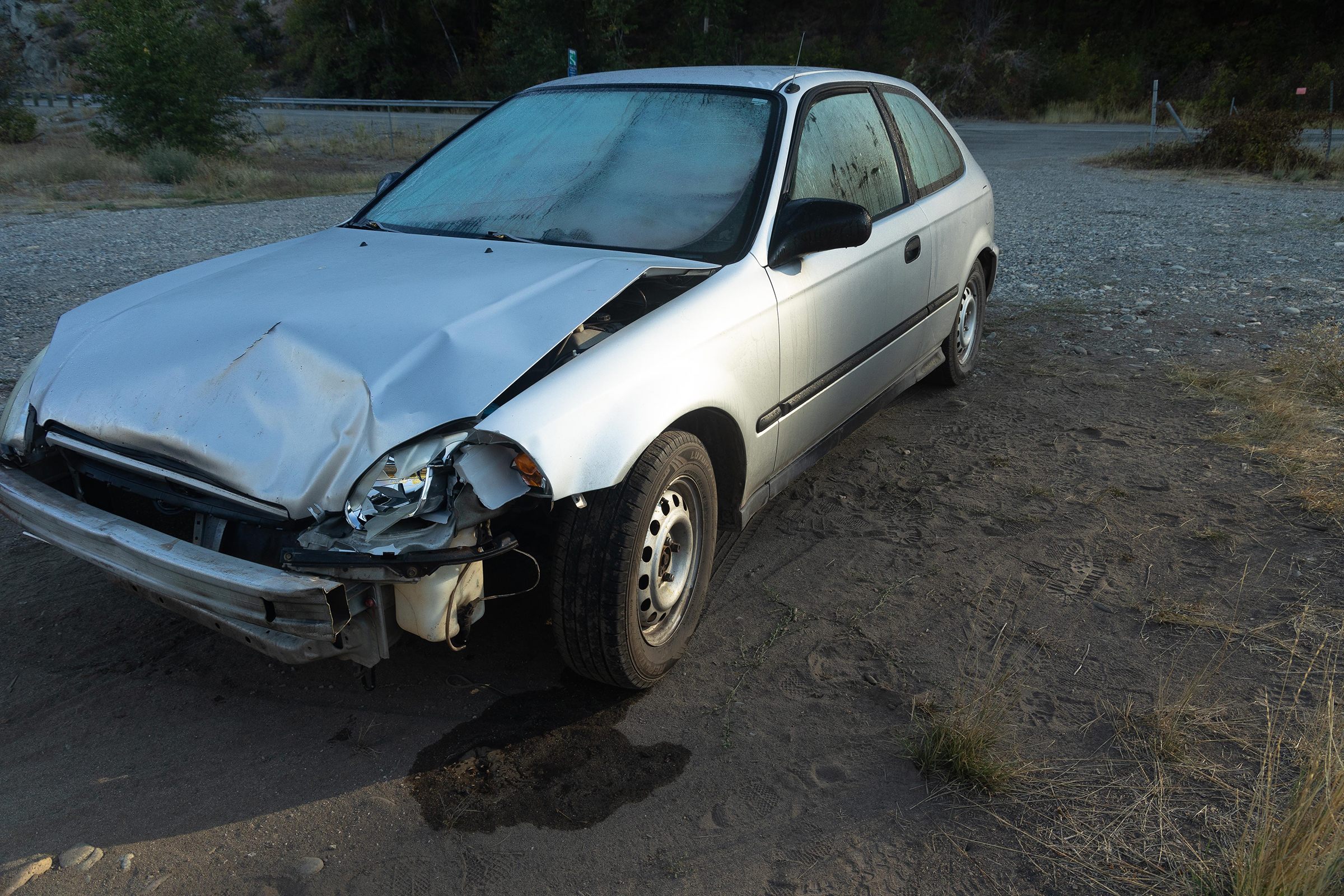
The Methow, like so many rural communities, has changed dramatically over the past half-century—and roads have been integral to its transformation. In 1972, Highway 20 breached the vertiginous granite walls of the Cascades and connected the somnolent valley to Seattle and Olympia. Overnight the Methow became a tourist destination, trafficked each weekend by urbanites who lacked locals’ deer-savvy driving skills. Jim Mountjoy, former manager of the Methow Wildlife Area, realized the valley was changing one summer when he saw a smashed Mercedes-Benz at a gas station. The car’s owner admitted that he’d hit a deer near the town of Pateros doing 65 miles per hour—then, 20 miles down the road, whacked another one at the same speed. “He hadn’t learned anything from hitting the first deer,” Mountjoy recalled with a rueful chuckle.
Despite the influx of visitors, the Methow’s remoteness still shielded it; as recently as 2016 most stretches of Highway 20 were traveled by only a few thousand cars per day. In 2020, however, COVID-19 produced another traffic surge, as Seattleites fled the city for rural refuges where they could live closer to nature, Zoom into work, and perhaps afford an acre or two. One day that October, the Forest Service tallied 732 cars at a single trailhead. “There’s no more off-season,” Mountjoy said.
The spike in visitation could mean more deer collisions over time—or, counterintuitively, it could mean fewer. Research suggests that, when daily traffic rates reach around 8.000 vehicles, the wall of cars deters deer from crossing highways; along some massive interstates, herds have ceased migrating altogether. Unable to access their low-elevation winter range, deer and other ungulates have succumbed to mass starvation. For all their horror, then, the Methow’s chronic collisions are perversely encouraging: They suggest that the Methow’s herds are still crossing Highway 20, and thus remain capable of accessing their seasonal habitats—at least for now.
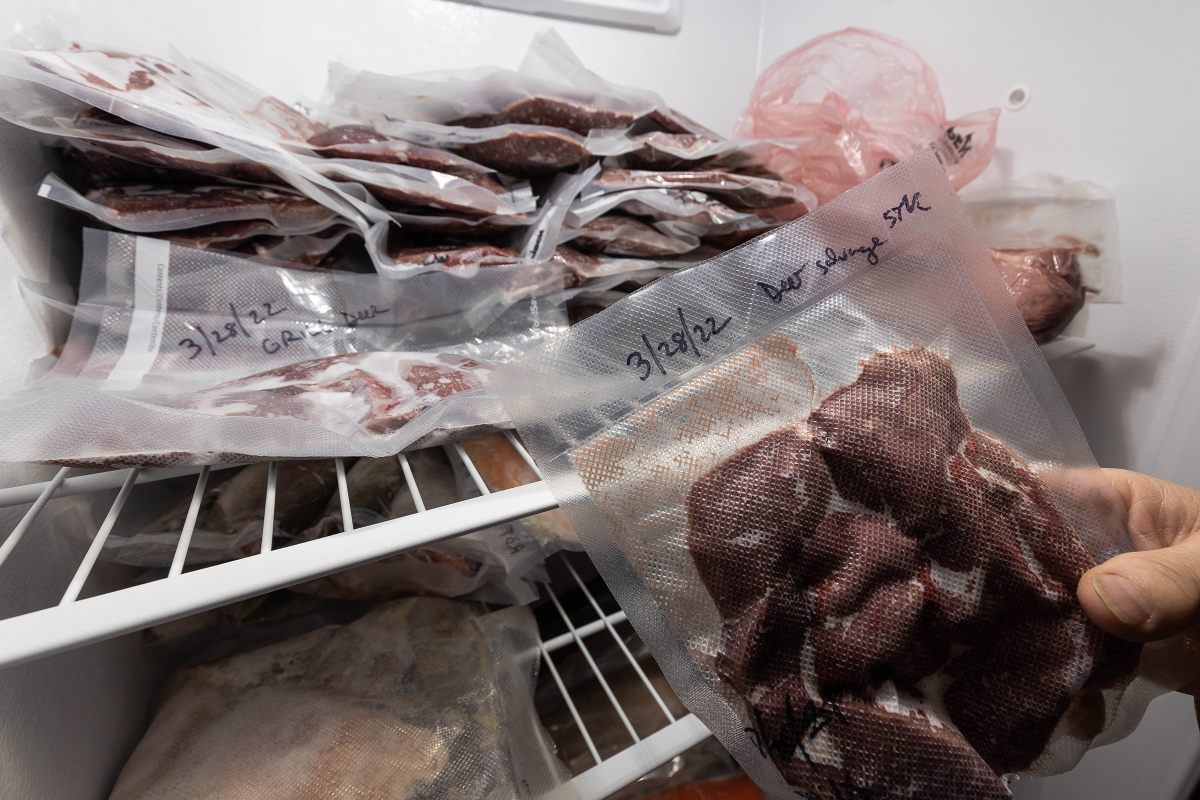
As cars proliferate in the Methow, getting deer safely across the highway becomes ever more important. But Washington’s transportation department hasn’t tried much in the way of solutions in the valley. Some 20 years ago, Mountjoy installed a changeable CAUTION sign that he annually updates with estimated kill counts and vehicular damages. (When I visited, the body count between January and March was 142 and the costs had already reached $315,000.) Yet most drivers habituate to and ignore deer signs, and even Mountjoy isn’t certain what his efforts have accomplished. “I’m not sure whether it works or not, because we still get roadkills,” he said.
In other places with catastrophic roadkill, transportation agencies have installed wildlife crossings, along with miles of roadside fencing between them, to guide ungulates across highways. Well-designed crossings and fences typically slash roadkill by more than 80 percent; after Wyoming built six underpasses along one muley migration corridor, the structures averted so many collisions that they paid for themselves in five years. Washington is among the many western states where transportation departments and environmental organizations have jumped aboard the crossing bandwagon. After the group Conservation Northwest renovated a bridge at a collision hotspot on Highway 97, just east of the Methow, to provide passage for deer, coyotes, bobcats, and other critters in 2020, roadkill plummeted by 91 percent. “This has gone from an issue that seemed like it was baiting right-wing backlash, to one where these things are embraced,” said Mitch Friedman, the organization’s executive director.
Whether the Methow would be suitable for wildlife crossings is a matter of some debate. Scott Fitkin pointed out that the Methow’s resident deer don’t adhere to predictable pathways; instead, they seem to traipse across Highway 20 willy-nilly. “You’d have to fence virtually the entire highway corridor,” Fitkin says. “It would be logistically very challenging.” Yet the Methow’s roadkill isn’t completely random. In 2020, researchers at Washington State University analyzed the valley’s collisions and found that carcasses were disproportionately concentrated in “Zone 5,” a 2.7-mile road section just north of the town of Winthrop. That area, the scientists added, “contains various sites along its length where over- and underpasses could be engineered and linked by deer-proof fencing.” If the Methow is going to solve its roadkill problem, Zone 5 is the place to start.
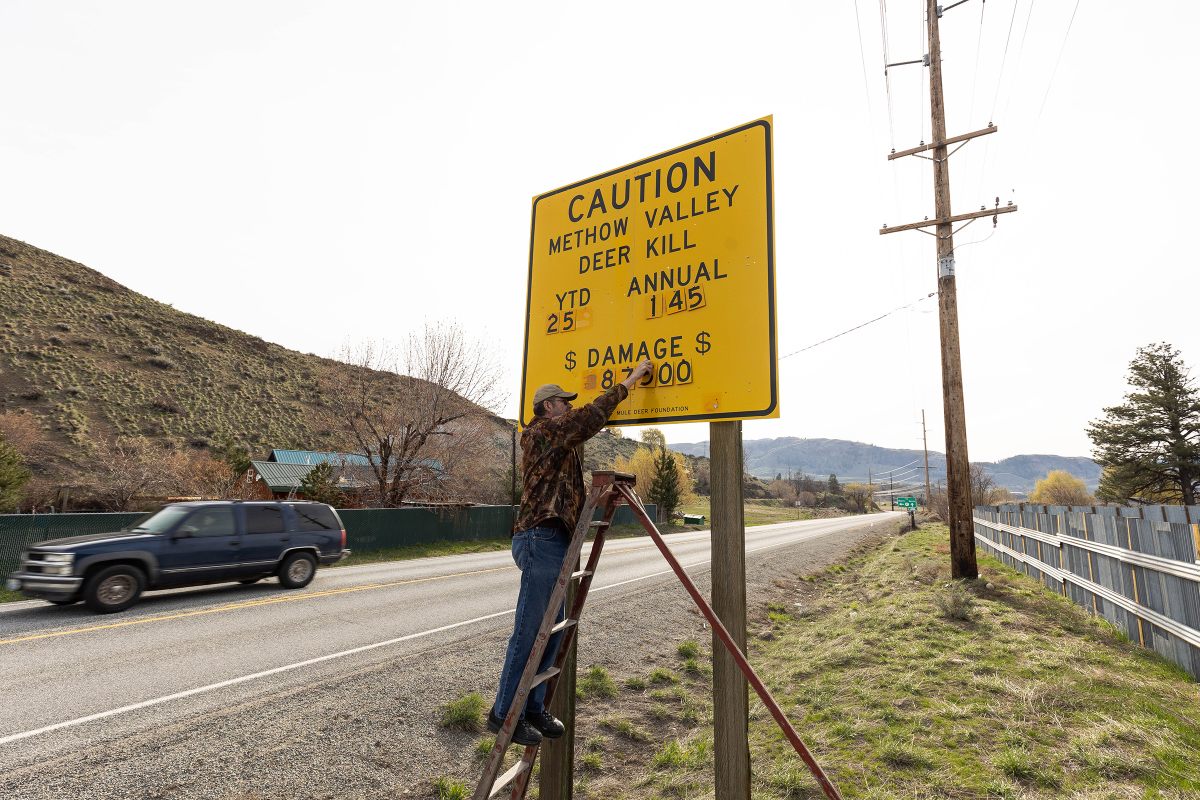
Until then, all the valley’s residents can do is to seek atonement in the kitchen. One afternoon, I paid a visit to a cabinetmaker and deer harvester named Nils Knudsen. Knudsen’s salvage career began late one night in 2010 when his wife, Sarah, hit a mule deer on Highway 20. The Knudsens were vegans, homesteaders, and animal-lovers; taking life, however inadvertently, left them shaken and distraught. The couple decided that eating the deer—converting waste into sustenance—would make them feel better. Nils woke up their neighbor, a moose hunter, who gave them a crash-course in butchery. It was the first meat they’d eaten in years.
It wouldn’t be the last. Roadkill salvage has since become a reliable source of calories for the Knudsens, who have harvested around ten deer over the years. “I give it the ol’ physician’s patdown,” he said. “If you feel broken ribs, don’t open up the animal — the guts and stomach might be rolling around.” Knudsen also checks for bruising, often visible through the fur. A deer struck broadside may have one unharmed flank; one whose organs have ruptured may still have immaculate backstraps along the spine. Roadkill, like any local food, is seasonal; a hundred pounds of raw meat doesn’t last long under the August sun. “I wouldn’t bother salvaging a deer in summer unless I saw the collision happen,” Knudsen said.
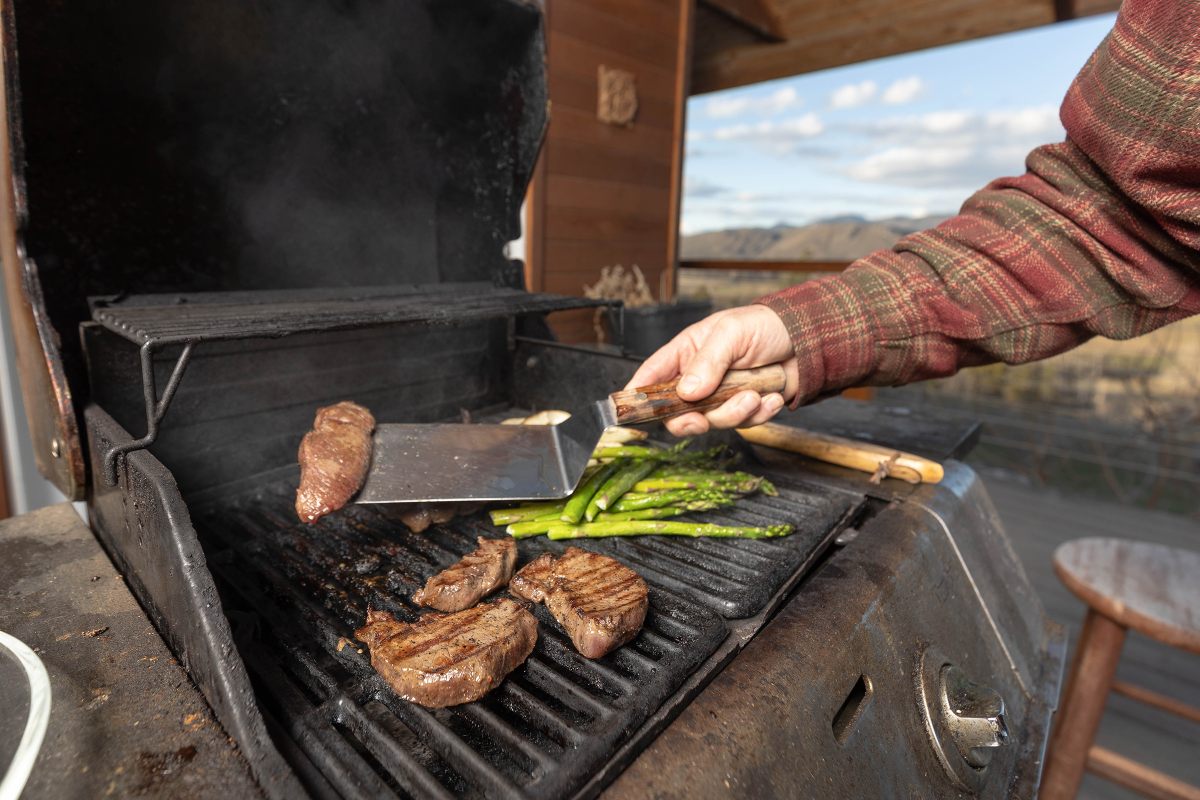
Roadkill harvest fits neatly into the Knudsens’ ethos of self-sufficiency and locavorism. Nils showed me around the property, which was still mostly interred beneath snow. The carport was built from ponderosa pine logged on their land; the chickens they’d bred for their sky-blue eggs. Many summer nights, they sourced dinner entirely from their vegetable patch and the highway. Knudsen is partial to using the venison in bigo, a hearty Hungarian stew. What little they don’t eat, they bury in the garden. “Things seem to grow really well a couple years later,” Knudsen said.
At our evolutionary root, we humans are scavengers. Before we hunted antelope, we exploited the kills of large cats. We knelt to zebra carcasses after lions ate their fill, climbed trees to steal gazelles cached by leopards. In becoming a salvager, Knudsen had slipped back into an ancient role, one that intimately bound him to his fellow creatures. One winter, Knudsen told me, a deer was struck in front of his house, and stumbled uphill to die in the woods. That night a gentle snow fell, preserving the body beneath a coverlet of frost. Knudsen came upon it a few days later and, finding the neck meat and backstraps still good, carved out a few cuts for the stewpot. When he returned later that week, he found that a cougar had discovered the carcass and cached the leftovers beneath dead leaves—a hominid and a felid, uneasily sharing carrion once more, reunited by the road.
Gastro Obscura covers the world’s most wondrous food and drink.
Sign up for our regular newsletter.

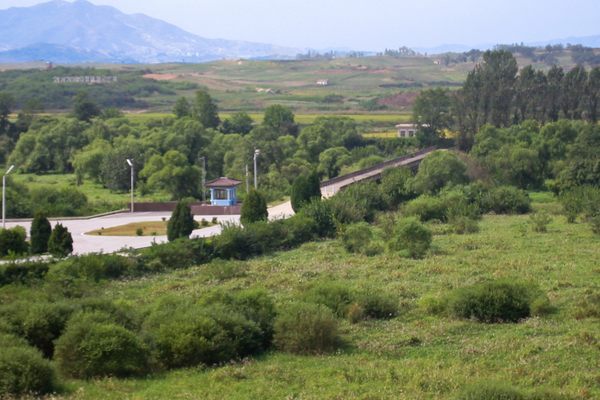


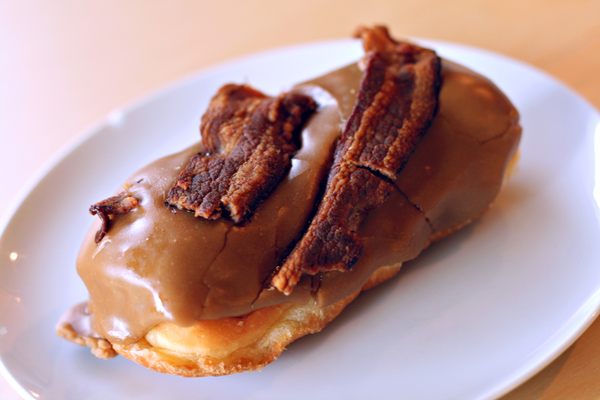
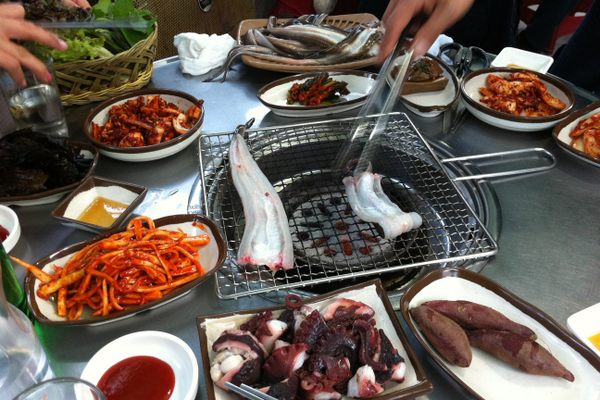










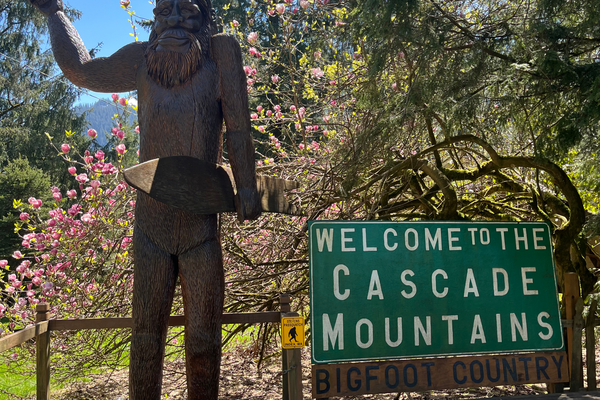





Follow us on Twitter to get the latest on the world's hidden wonders.
Like us on Facebook to get the latest on the world's hidden wonders.
Follow us on Twitter Like us on Facebook